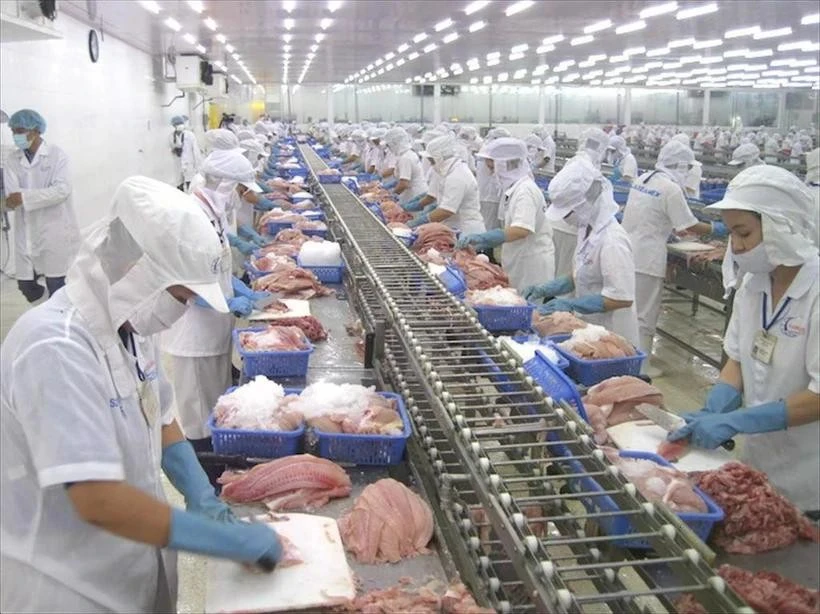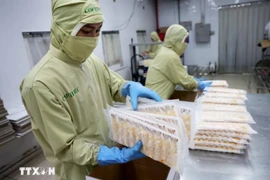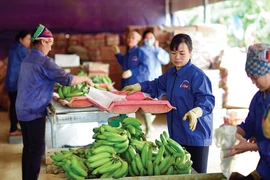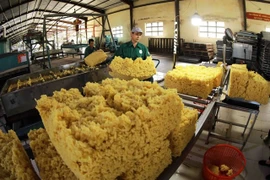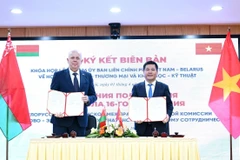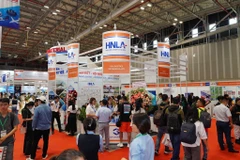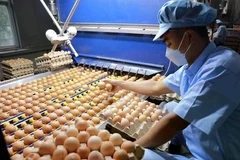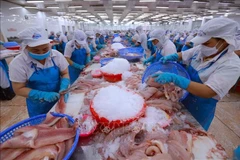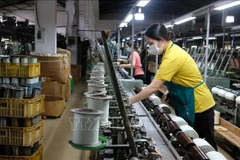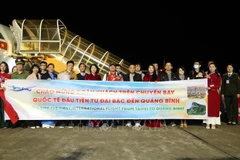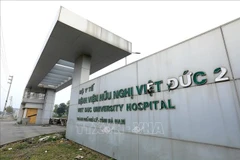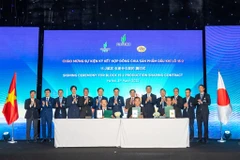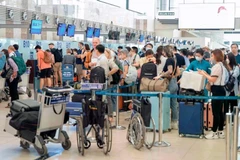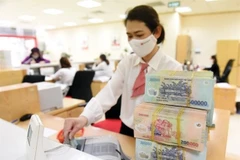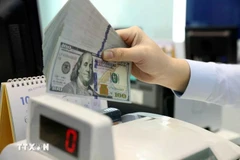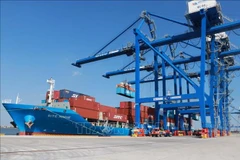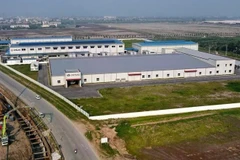Hanoi (VNA) – In January, the export value of agricultural, forestry, and aquatic products decreased 4.9% compared to the same period last year. However, thanks to strong growth in February 2025, the total value for the first two months of this year reached 9.48 billion USD, an increase of 8.3% compared to the same period in 2024.
Deputy Minister of Agriculture and Environment Phung Duc Tien has talked to the media about agricultural, forestry, and aquatic exports and challenges to the realisation of the growth targets set by the Government.
Reporter: Could you please detail agricultural, forestry, and aquatic export results in the first two months of 2025?
Deputy Minister Phung Duc Tien: The export turnover of agricultural, forestry, and aquatic products in the first two months of 2025 reached 9.38 billion USD, a rise of 8.3% compared to the same period in 2024. Overall, products with high export value have still sustained growth and recorded surpluses.
Overseas shipments of agricultural products stood at 4.89 billion USD, increasing by 4.5%; livestock product amounted to 72.2 million USD, up 4%; aquatic products reached 1.42 billion USD, up 18.6%; and forestry products totalled 2.68 billion USD, up 11.9%.
In the first two months, coffee exports saw a significant increase of 26.2%, even though production dropped by 28.2%. This year’s value is expected to hit 6 billion USD.
Alongside good export growth of commodities like forestry products, seafood, coffee, and pepper, some experienced a decline in value such as fruits, vegetables, and rice. Therefore, the sector needs to leverage the products that are performing well.
For instance, in the case of rice, the average price in the first two months of 2025 was estimated at 553.6 USD per tonne, a decrease of 18.3% from the same period in 2024. However, in the early days of March, the export price of rice has started to inched up. Last year, 9.15 million tonnes of rice was shipped abroad, and the volume is expected to reach around 9 million tonnes this year. With 75% of the rice being high-quality, any potential drop in exports will be inconsiderable because we have developed markets to ensure the maintenance of both export volume and value.
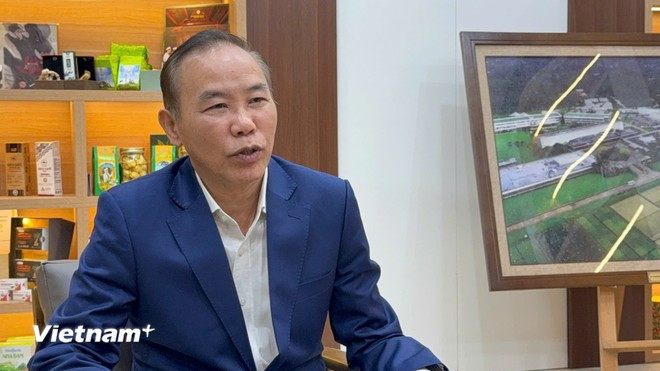
Regarding the products experiencing a decline in export turnover, the sector has readied solutions to maintain growth momentum in the coming months. The fluctuations in early 2025 are viewed as new drivers for transformation and accelerated development, based on the established agricultural production ecosystem and agricultural economic thinking.
Reporter: From the export results, what challenges do you foresee for the coming period?
Deputy Minister Phung Duc Tien: The January meeting of the standing Cabinet members identified the threat of a trade war. Especially, after nearly two months of Donald Trump’s presidency, we have seen the impact of his protectionist policy on domestic production, as well as his policies towards China and other countries. Furthermore, issues involving the US, Ukraine, and Europe are heating up.
So far, these problems have yet to significantly affect Vietnam’s agricultural market. However, we are also a large trade partner to the US, with a substantial export surplus. Therefore, we need to identify challenges to adopt suitable solutions to ensure the export of agricultural, forestry, and aquatic products in 2025 reaches the target set by the Prime Minister, which is 64–65 billion USD, and even 70 billion USD.
The earnings from agricultural, forestry, and aquatic products is real income and real surplus that contribute to foreign currency revenue, which drives nation industrialisation and modernisation.
Reporter: With the target of achieving 70 billion USD in agro-forestry-fisheries exports, how should we leverage growth potential and promote deep processing?
Deputy Minister Phung Duc Tien: Currently, crop production accounts for about 43% of the agricultural sector’s total value. The highest annual growth rate in this field recorded so far is 2.2% while it normally stands at around 1.5–1.8%. Animal farming, which makes up 5% of GDP and some 26% of the total agricultural value, saw the maximum growth rate of 5.92% in 2022.
Fisheries accounts for 28% of the total agricultural value, growing at a rate of 3.5–3.8%. Forestry, holding a smaller part of the agricultural sector, posts average growth of around 7%.
These areas represent the potential that needs to be reviewed to achieve the 2025 agricultural growth target of 4% as set by the Government.
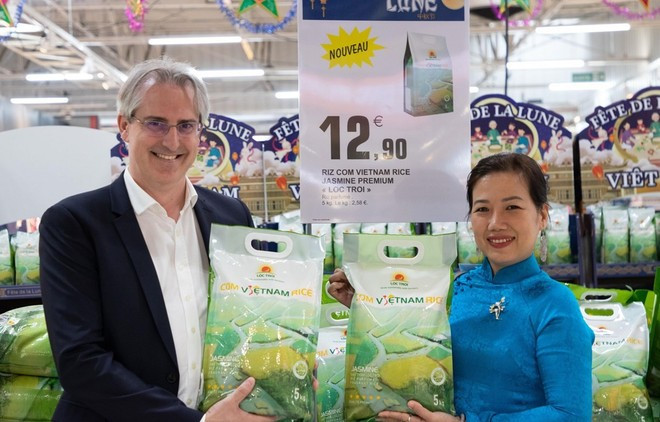
There remain potential, opportunities, and advantages for Vietnam’s agricultural, forestry, and aquatic exports. In the current context, science and technology are the first and foremost solution that determines the nation’s position, as well as the industry’s standing. The Politburo issued Resolution No. 57-NQ/TW on December 22, 2024 on making breakthroughs in the development of science, technology, innovation, and national digital transformation. Therefore, it is necessary to promote science and technology strongly, decisively, and effectively.
Science and technology account for 55% of the entire sector’s added value. However, in the time ahead, they must be integrated into breeding programmes, farming practices, plant protection, and veterinary disease prevention. These should be tied to a circular economy and digital transformation to ensure origin traceability and transparency for the products exported to the global market.
Regarding processing and deep processing, currently, Vietnam mainly exports raw materials in bulk, while the world exports packaged products (refined and deep-processed) – where added value lies.
In the context of the finite farmland area in Vietnam, there is an even greater need for focus on productivity, quality, and raw material zones linked with deep processing to create high added value. This is the room that can enable the sector to meet its agro-forestry-aquatic export target for 2025 and lay the groundwork for exports in the 2026–2030 period.
Reporter: Thank you very much, Deputy Minister!./.
